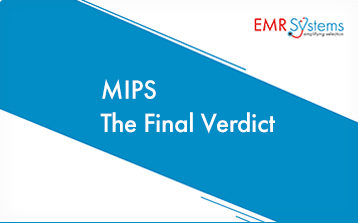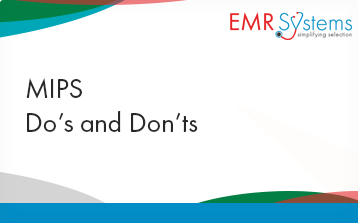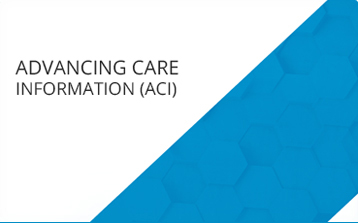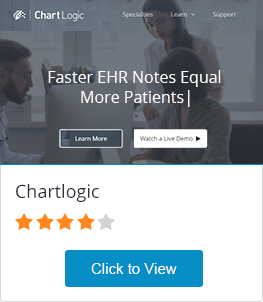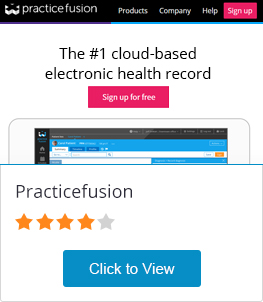- Cardiology
- Dermatology
- Family Medicine
- Oncology
- Surgery
- Internal Medicine
- Neurology
- ObGyn
- Otolaryngology
- Pediatrics
CMS has determined 20 measure sets for cardiology in the Quality performance category that are further
reduced to 7 when filtered to show only high priority measures. Of these 7 measures only Controlling
High Blood Pressure is an outcome measure, and of intermediate priority. Measures can be filtered
further by Data Submission Method.
Cardiologist clinicians need only submit the following to achieve a full score in Quality:
| Measure |
Measure Type |
High Priority Measure |
Submission Method |
|
Cardiac Stress Imaging Not Meeting Appropriate Use Criteria: Preoperative Evaluation in Low Risk
Surgery Patients
|
Efficiency
|
|
Registry
|
|
Cardiac Stress Imaging Not Meeting Appropriate Use Criteria: Routine Testing After Percutaneous
Coronary Intervention (PCI)
|
Efficiency
|
|
Registry
|
|
Cardiac Stress Imaging Not Meeting Appropriate Use Criteria: Testing in Asymptomatic, Low-Risk
Patients
|
Efficiency
|
|
Registry
|
|
Care Plan
|
Process
|
|
Claims, Registry
|
|
Closing the Referral Loop: Receipt of Specialist Report
|
Process
|
|
EHR
|
|
Controlling High Blood Pressure
|
Intermediate Outcome
|
|
Claims, EHR, CMS Web Interface, Registry
|
|
Documentation of Current Medications in the Medical Record
|
Process
|
|
Claims, EHR, Registry
|
To find greater detail about Quality measures and reporting requirements download our Quality
whitepaper.
Download Whitepaper
There are 11 specialty specific quality measures outlined by CMS for dermatology. Out of these only 7
are high priority measures. Dermatology clinicians can further filter these measures by data submission
method. There is only one high priority outcome method for dermatology which fulfills the CMS
requirements. Dermatology clinicians only need to fill the following to achieve their Quality measure
requirements.
| Measure |
Measure Type |
High Priority Measure |
Submission Method |
|
Biopsy Follow-Up
|
Process
|
|
Registry
|
|
Closing the Referral Loop: Receipt of Specialist Report
|
Process
|
|
EHR
|
|
Documentation of Current Medications in the Medical Record
|
Process
|
|
Claims, EHR, Registry
|
|
Melanoma: Continuity of Care - Recall System
|
Structure
|
|
Registry
|
|
Melanoma: Coordination of Care
|
Process
|
|
Registry
|
|
Melanoma: Overutilization of Imaging Studies in Melanoma
|
Process
|
|
Registry
|
|
Psoriasis: Clinical Response to Oral Systemic or Biologic Medications
|
Outcome
|
|
Claims, Registry
|
To find out about earning bonus credit in Quality measures, download our definitive whitepaper.
Download Whitepaper
There are 55 quality measures specific to Family Medicine listed by CMS, yet only 25 of them are high
priority measures. We have listed eight measures for your convenience, two of which are outcome measures
for you to choose from, fulfilling the reporting requirement for this category.
| Measure |
Measure Type |
High Priority Measure |
Submission Method |
|
CAHPS for PQRS Clinician/Group Survey
|
Patient Engagement/Experience
|
|
CSV
|
|
Care Plan
|
Process
|
|
Claims, Registry
|
|
Depression Remission at Twelve Months
|
Outcome
|
|
EHR, CMS Web Interface, Registry
|
|
Documentation of Current Medications in the Medical Record
|
Process
|
|
Claims, EHR, Registry
|
|
Elder Maltreatment Screen and Follow-Up Plan
|
Process
|
|
Claims, Registry
|
|
Pain Brought Under Control within 48 Hours
|
Outcome
|
|
Registry
|
|
Use of Imaging Studies for Low Back Pain
|
Process
|
|
EHR
|
|
Osteoarthritis (OA): Function and Pain Assessment
|
Process
|
|
Claims, Registry
|
To find out about bonus credit measures under MIPS download our Quality specific whitepaper today!
Download Whitepaper
CMS has determined 19 measure sets for general oncology in the Quality performance category that are
further reduced to 13 when filtered to show only high priority measures. Out of the thirteen measures
three are outcome measures. Oncologist clinicians need only submit six of the following to gain a full
score in the Quality category:
| Measure |
Measure Type |
High Priority Measure |
Submission Method |
|
Care Plan
|
Process
|
|
Claims, Registry
|
|
Closing the Referral Loop: Receipt of Specialist Report
|
Process
|
|
EHR
|
|
Documentation of Current Medications in the Medical Record
|
Process
|
|
Claims, EHR, Registry
|
|
HER2 Negative or Undocumented Breast Cancer Patients Spared Treatment with HER2-Targeted
Therapies
|
Process
|
|
Registry
|
|
Oncology: Medical and Radiation - Pain Intensity Quantified
|
Process
|
|
EHR, Registry
|
|
Patients with Metastatic Colorectal Cancer and KRAS Gene Mutation Spared Treatment with
Anti-epidermal Growth Factor Receptor (EGFR) Monoclonal Antibodies
|
Process
|
|
Registry
|
|
Proportion Admitted to Hospice for less than 3 days
|
Outcome
|
|
Registry
|
|
Proportion Admitted to the Intensive Care Unit (ICU) in the Last 30 Days of Life
|
Outcome
|
|
Registry
|
|
Proportion Not Admitted To Hospice
|
Process
|
|
Registry
|
|
Proportion of Patients who Died from Cancer with more than One Emergency Department Visit in the
Last 30 Days of Life
|
Outcome
|
|
Registry
|
|
Proportion Receiving Chemotherapy in the Last 14 Days of Life
|
Process
|
|
Registry
|
|
Prostate Cancer: Avoidance of Overuse of Bone Scan for Staging Low Risk Prostate Cancer Patients
|
Process
|
|
Registry
|
|
Trastuzumab Received By Patients with AJCC Stage I (T1c) - III and HER2 Positive Breast Cancer
Receiving Adjuvant Chemotherapy
|
Process
|
|
Registry
|
For greater detail on Quality measures and reporting requirements download our Quality white paper.
Download Whitepaper
CMS has listed 14 quality performance measures for General Surgery, which are reduced to 10 once
filtered for high priority measures. Out of the ten measures four are outcome measures. General surgery
clinicians only need to report six of the following measures to gain a full Quality score:
| Measure |
Measure Type |
High Priority Measure |
Submission Method |
|
Anastomotic Leak Intervention
|
Outcome
|
|
Registry
|
|
Anastomotic Leak Intervention
|
Outcome
|
|
Registry
|
|
Closing the Referral Loop: Receipt of Specialist Report
|
Process
|
|
EHR
|
|
Documentation of Current Medications in the Medical Record
|
Process
|
|
Claims, EHR, Registry
|
|
Patient-Centered Surgical Risk Assessment and Communication
|
Process
|
|
Registry
|
|
Perioperative Care: Selection of Prophylactic Antibiotic - First OR Second Generation
Cephalosporin
|
Process
|
|
Claims, Registry
|
|
Perioperative Care: Venous Thromboembolism (VTE) Prophylaxis (When Indicated in ALL Patients)
|
Process
|
|
Claims, Registry
|
|
Surgical Site Infection (SSI)
|
Outcome
|
|
Registry
|
|
Unplanned Hospital Readmission within 30 Days of Principal Procedure
|
Outcome
|
|
Registry
|
|
Unplanned Reoperation within the 30 Day Postoperative Period
|
Outcome
|
|
Registry
|
For more information on Quality measures and reporting requirements download our Quality white paper.
Download Whitepaper
The Internal Medicine specialty set has 37 listed measures by CMS. These are reduced to 14 after they
are filtered for high priority measures. Out of the 14, only two are intermediate outcome measures for
clinicians to choose from. Internal medicine clinicians only need to report six of the following
measures to gain a full Quality score:
| Measure |
Measure Type |
High Priority Measure |
Submission Method |
|
Adult Sinusitis: Antibiotic Prescribed for Acute Sinusitis (Overuse)
|
Process
|
|
Registry
|
|
Adult Sinusitis: Appropriate Choice of Antibiotic: Amoxicillin With or Without Clavulanate
Prescribed for Patients with Acute Bacterial Sinusitis (Appropriate Use)
|
Process
|
|
Registry
|
|
Adult Sinusitis: Computerized Tomography (CT) for Acute Sinusitis (Overuse)
|
Efficiency
|
|
Registry
|
|
Adult Sinusitis: More than One Computerized Tomography (CT) Scan within 90 Days for Chronic
Sinusitis (Overuse)
|
Efficiency
|
|
Registry
|
|
Avoidance of Antibiotic Treatment in Adults with Acute Bronchitis
|
Process
|
|
Registry
|
|
Care Plan
|
Process
|
|
Claims, Registry
|
|
Controlling High Blood Pressure
|
Intermediate Outcome
|
|
Claims, EHR, CMS Web Interface, Registry
|
|
Diabetes: Hemoglobin A1c (HbA1c) Poor Control (>9%)
|
Intermediate Outcome
|
|
Claims, EHR, CMS Web Interface, Registry
|
|
Documentation of Current Medications in the Medical Record
|
Process
|
|
Claims, EHR, Registry
|
|
Elder Maltreatment Screen and Follow-Up Plan
|
Process
|
|
Claims, Registry
|
|
Falls: Plan of Care
|
Process
|
|
Claims, Registry
|
|
Falls: Risk Assessment
|
Process
|
|
Claims, Registry
|
|
Osteoarthritis (OA): Function and Pain Assessment
|
Process
|
|
Claims, Registry
|
|
Urinary Incontinence: Plan of Care for Urinary Incontinence in Women Aged 65 Years and Older
|
Process
|
|
Claims, Registry
|
For more information on Quality measures and reporting requirements download our Quality white paper.
Download Whitepaper
There are 26 Quality measures in total outlined by CMS for clinicians practicing Neurology, out of
which 10 have been classified as high priority measures. Since one of these is also an outcome measure,
clinicians can fulfill their Quality measure requirements by reporting six of the measures below:
| Measure |
Measure Type |
High Priority Measure |
Submission Method |
|
Amyotrophic Lateral Sclerosis (ALS) Patient Care Preferences
|
Process
|
|
Registry
|
|
Care Plan
|
Process
|
|
Claims, Registry
|
|
Closing the Referral Loop: Receipt of Specialist Report
|
Process
|
|
EHR
|
|
Dementia: Caregiver Education and Support
|
Process
|
|
Registry
|
|
Dementia: Counseling Regarding Safety Concerns
|
Process
|
|
Registry
|
|
Documentation of Current Medications in the Medical Record
|
Process
|
|
Claims, EHR, Registry
|
|
Overuse of Neuroimaging For Patients With Primary Headache And A Normal Neurological Examination
|
Efficiency
|
|
Claims, Registry
|
|
Parkinson's Disease: Parkinson's Disease Medical and Surgical Treatment Options Reviewed
|
Process
|
|
Registry
|
|
Parkinson's Disease: Rehabilitative Therapy Options
|
Process
|
|
Registry
|
|
Quality of Life Assessment for Patients With Primary Headache Disorders
|
Outcome
|
|
Claims, Registry
|
To find out how to secure bonus scores in all MIPS categories download our whitepapers today!
Download Whitepaper
CMS has listed 24 Quality measures for Obstetrics/Gynecology out of which only 12 are high priority
measures. There are over three high priority outcomes for clinicians to choose from, fulfilling all of
CMS Quality measure requirements if clinicians only report six of the following:
| Measure |
Measure Type |
High Priority Measure |
Submission Method |
|
Appropriate Workup Prior to Endometrial Ablation
|
Process
|
|
Registry
|
|
Biopsy Follow-Up
|
Process
|
|
Registry
|
|
Care Plan
|
Process
|
|
Claims, Registry
|
|
Closing the Referral Loop: Receipt of Specialist Report
|
Process
|
|
EHR
|
|
Controlling High Blood Pressure
|
Intermediate Outcome
|
|
Claims, EHR, CMS Web Interface, Registry
|
|
Documentation of Current Medications in the Medical Record
|
Process
|
|
Claims, EHR, Registry
|
|
Non-Recommended Cervical Cancer Screening in Adolescent Females
|
Process
|
|
Registry
|
|
Performing Cystoscopy at the Time of Hysterectomy for Pelvic Organ Prolapse to Detect Lower
Urinary Tract Injury
|
Process
|
|
Claims, Registry
|
|
Proportion of Patients Sustaining a Bladder Injury at the Time of any Pelvic Organ Prolapse
Repair
|
Outcome
|
|
Registry
|
|
Proportion of Patients Sustaining a Bowel Injury at the time of any Pelvic Organ Prolapse Repair
|
Outcome
|
|
Registry
|
|
Proportion of Patients Sustaining a Ureter Injury at the Time of any Pelvic Organ Prolapse Repair
|
Outcome
|
|
Registry
|
|
Urinary Incontinence: Plan of Care for Urinary Incontinence in Women Aged 65 Years and Older
|
Outcome
|
|
Claims, Registry
|
To find out more about Quality measures, and how to gain bonus credit, download our whitepaper today.
Download Whitepaper
For the Otolaryngology specialty, CMS has listed 18 Quality measures, of which 13 are high priority
measures. The list also contains one high priority outcome measures ensuring that clinicians need only
follow six of the following to achieve their full Quality category score.
| Measure |
Measure Type |
High Priority Measure |
Submission Method |
|
Acute Otitis Externa (AOE): Systemic Antimicrobial Therapy - Avoidance of Inappropriate Use
|
Process
|
|
Claims, Registry
|
|
Acute Otitis Externa (AOE): Topical Therapy
|
Process
|
|
Claims, Registry
|
|
Adult Sinusitis: Antibiotic Prescribed for Acute Sinusitis (Overuse)
|
Process
|
|
Registry
|
|
Adult Sinusitis: Appropriate Choice of Antibiotic: Amoxicillin With or Without Clavulanate
Prescribed for Patients with Acute Bacterial Sinusitis (Appropriate Use)
|
Process
|
|
Registry
|
|
Adult Sinusitis: Computerized Tomography (CT) for Acute Sinusitis (Overuse)
|
Efficiency
|
|
Registry
|
|
Adult Sinusitis: More than One Computerized Tomography (CT) Scan Within 90 Days for Chronic
Sinusitis (Overuse)
|
Efficiency
|
|
Registry
|
|
Care Plan
|
Process
|
|
Claims, Registry
|
|
Closing the Referral Loop: Receipt of Specialist Report
|
Process
|
|
EHR
|
|
Documentation of Current Medications in the Medical Record
|
Process
|
|
Claims, EHR, Registry
|
|
Patient-Centered Surgical Risk Assessment and Communication
|
Process
|
|
Registry
|
|
Perioperative Care: Selection of Prophylactic Antibiotic - First OR Second Generation
Cephalosporin
|
Process
|
|
Claims, Registry
|
|
Perioperative Care: Venous Thromboembolism (VTE) Prophylaxis (When Indicated in ALL Patients)
|
Process
|
|
Claims, Registry
|
|
Surgical Site Infection (SSI)
|
Outcome
|
|
Claims, Registry
|
|
Surgical Site Infection (SSI)
|
Outcome
|
|
Claims, Registry
|
Learn more about MIPS measures and how to attain the perfect score for up to three times positive
payment adjustments.
Download Whitepaper
CMS has listed 18 quality performance measure sets for general pediatrics, out of which only 7 are high
priority measures. Since the pediatric specialty set doesn’t have any outcome measures clinicians can
submit six of the following high priority measures to gain a full score in the Quality category:
| Measure |
Measure Type |
High Priority Measure |
Submission Method |
|
Acute Otitis Externa (AOE): Systemic Antimicrobial Therapy - Avoidance of Inappropriate Use
|
Process
|
|
Claims, Registry
|
|
Acute Otitis Externa (AOE): Topical Therapy
|
Process
|
|
Claims, Registry
|
|
Appropriate Testing for Children with Pharyngitis
|
Process
|
|
EHR, Registry
|
|
Appropriate Treatment for Children with Upper Respiratory Infection (URI)
|
Process
|
|
EHR, Registry
|
|
Child and Adolescent Major Depressive Disorder (MDD): Suicide Risk Assessment
|
Process
|
|
EHR
|
|
Follow-Up After Hospitalization for Mental Illness (FUH)
|
Process
|
|
Registry
|
|
Medication Management for People with Asthma
|
Process
|
|
Registry
|
For more information on Quality measures and reporting requirements download our Quality white paper.
Download Whitepaper

